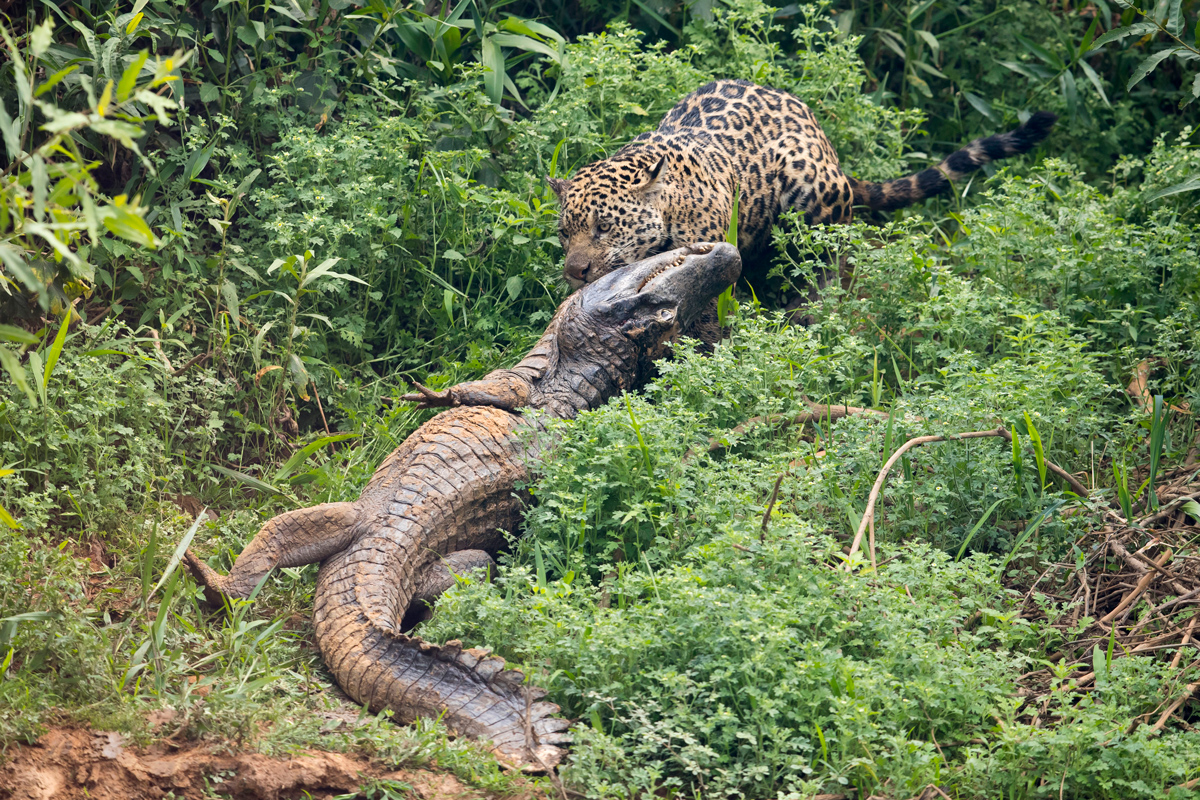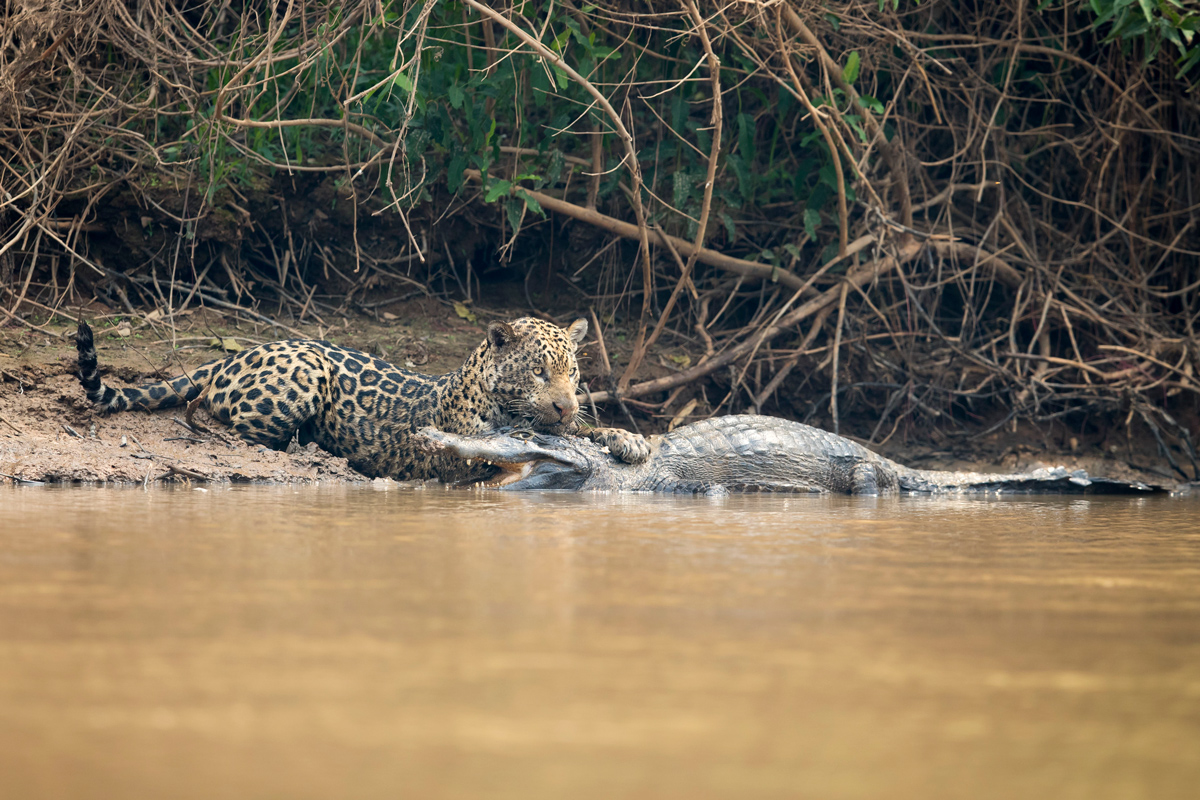In Photos: A Jaguar Takes Down a Caiman in Brazil
Jaguar attack

Deep in the Brazilian Pantanal, a jaguar launches onto a caiman, delivering a deadly bite to the back of the reptile's neck. The U.K.-based wildlife photographer Chris Brunskill was on the scene, photographing from a boat in the Rio Tres Irmaos river. This vast region of Brazil is one of the world's largest tropical wetlands and is home to thousands of animal species.
[Read the full story on the jaguar-caiman battle]
Death roll

Teeth bared, the Brazilian jaguar (Panthera onca) subdues a large caiman on Sept. 25, 2017, by the banks of the Rio Tres Irmaos, or Three Brothers River. According to a post on photographer Chris Brunskill's Facebook page, the jaguar had earlier tried to charge a group of capybara, but with no luck. The big cat then turned its attention to a caiman resting in the shallows and pounced.
It took a "long struggle" for the jaguar to take down its caiman prey, Brunskill wrote on Facebook. Jaguars eat only meat, but they take their meals from at least 85 species, according to a 1996 report by the International Union for Conservation of Nature and Natural Resources Cat Specialist Group. They may be specially evolved to eat water reptiles like caiman, according to that report. Unlike other big cats, jaguars kill their prey by biting directly into their skulls, and their extra-stout jaws and snouts may have arisen specifically to crunch into armored reptiles like caiman and river turtles.
Packing a lunch

After the caiman was dead, the jaguar spent 20 long minutes dragging the carcass from the beach into the dense undergrowth, Brunskill wrote. The attack happened around 9 a.m. local time, which is not unusual for jaguars. Although they were once thought to be largely nocturnal, radio-collar studies have shown that they're often busy around dawn and dusk, according to a 1996 report by the International Union for Conservation of Nature and Natural Resources Cat Specialist Group.
Jaguar in action

Jaguars once roamed as far north as the southern United States. Occasionally, one still wanders that far northward. Most recently, a male named El Jefe was spotted in southern Arizona. The northernmost population robust enough to breed, though, is in Sonora, Mexico.
Wet meal

An unlucky caiman becomes the target of a young jaguar in the Brazilian Pantanal. Jaguars range from 4 feet to 6 feet (1 to 2 meters) long, not including their tails, according to Defenders of Wildlife. Males can weigh as much as 250 pounds (113 kilograms) and females up to 200 pounds (90 kg), according to the Denver Zoo.
Get the world’s most fascinating discoveries delivered straight to your inbox.
The victim of the jaguar is a yacare or jacare caiman. Adult male jacare caiman can grow up to 9.8 feet (3 m) long, according to the World Association of Zoos.
Deadly wrestling

About 1.4 adult jaguars roam per every 37 square miles (100 square km) in the Brazilian Pantanal, according to a 1996 report by the International Union for Conservation of Nature and Natural Resources Cat Specialist Group. Jaguars have large territories in the region, spanning up to 55 square miles (142 square kilometers). Though poaching for fur has declined, jaguars still face threats from cattle ranchers, who kill the big cats to prevent them from killing their livestock.
End of the line

A young jaguar drags the defeated caiman by the throat on the banks of the Rio Tres Irmaos river. Photographer Chris Brunskill captured 50 gigabytes of images from the deadly tussle, he wrote on Facebook. Brunskill also photographed a jaguar in mid-air, leaping toward a caiman (which escaped), another jaguar carrying a small caiman kill into the forest and yet another stalking capybara. [Read the full story on the jaguar-caiman battle]

Stephanie Pappas is a contributing writer for Live Science, covering topics ranging from geoscience to archaeology to the human brain and behavior. She was previously a senior writer for Live Science but is now a freelancer based in Denver, Colorado, and regularly contributes to Scientific American and The Monitor, the monthly magazine of the American Psychological Association. Stephanie received a bachelor's degree in psychology from the University of South Carolina and a graduate certificate in science communication from the University of California, Santa Cruz.


